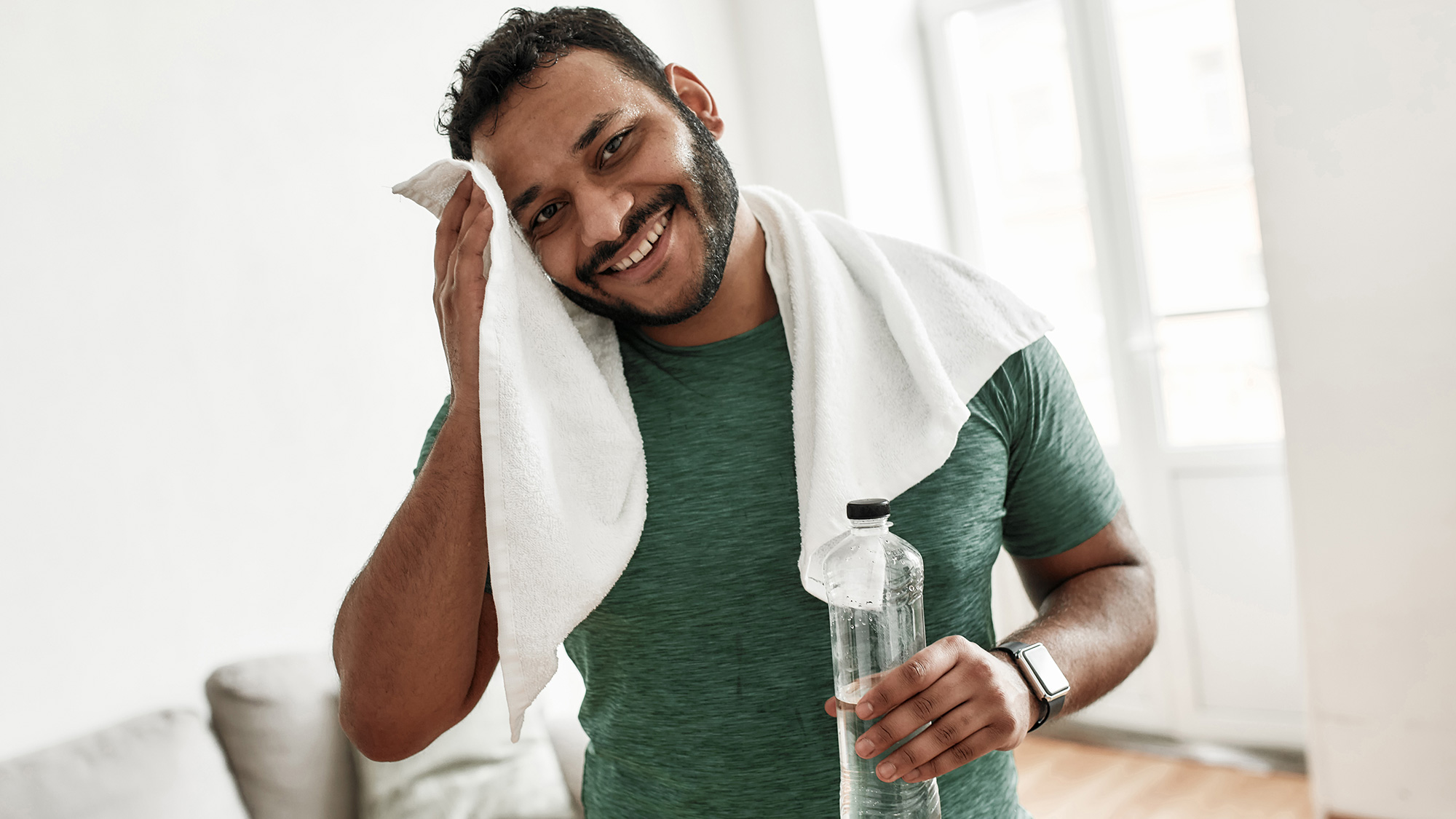Post-workout recovery plan: 5 things you should always do after exercise
Your post-workout recovery routine can be just as important as the main event. Here’s your cool-down checklist...


When it comes to prioritizing post-workout recovery, people typically fall into two camps: those for whom recovery with one of the best foam rollers is a religious practice, and those who know it's something they should do - but don't for whatever reason.
If you fall into the latter group, be assured that you're not alone. Paul Hatton, a personal trainer and Head of High Performance at Hull FC, says: 'The biggest mistake I see in most gym-goers or amateur athletes is that they forget about recovery. People are going into the gym to achieve their goals, but they never remove the stimulus to get ready to go again the next day.
'It’s quite simple really; if you stimulate the body, then you need to remove that stimulation with rest, as that’s when the body then adapts to handle the stimulation better next time. I preach a lot with the athletes I work with that recovery is huge. We all spend money on the gym, on protein and pre-workouts, but how many are spending money on a decent stretch band, or time in a hot tub?'
That said, post-workout recovery has become a more prominent topic of late. As more and more of us have taken up regular exercise routines in the wake of the Covid-19 pandemic, so more people are realizing the important role recovery plays in our all-round health and wellbeing.
Recent research commissioned by CryoAction found the main reasons people look for ways to recover from exercise were to keep them injury-free (46%), being able to train as often and intensely as they age (41%) and to improve their personal best (35%).
So what does recovery entail? Essentially it's about helping the body to physically repair and recover from the exertion of the activities it has undertaken. This not only means it can perform at its best the next time we workout, but also helps to prevent injury.
Below you'll find five steps to follow as part of your own post-workout recovery plan...
Start your week with achievable workout ideas, health tips and wellbeing advice in your inbox.
1. Stretch
Don’t scarper to the shower straight after you’ve finished your run or last rep. Cooling down is essential to stop blood pooling in your extremities. Finish off your routine with light cardio (walking) followed by stretching. It also helps to break up and eliminate lactic acid, which is produced during exercise and contributes to muscle soreness.
Below, personal trainer Anna Reich reveals her top total-body, post-workout recovery stretches - but this isn't an exhaustive list. When stretching, focus on the area worked to flush out waste products, decrease the heart rate and relax the muscles. Spend 30 seconds on each – or a further 30 if you’ve had an intense session.
Hanging toe touches
Targets the lower back, hamstrings and spinal realignment
Inhale, then exhale to roll down one vertebrae at a time to hinge forward and touch your toes (or as near as you can), then slowly roll up. ‘On each third exhalation reach a bit further,’ says Reich.
Kneeling quad stretch
Targets: your quads - obviously!
From a kneeling position, place one foot flat on the floor. Keep the knee of your other leg on the floor with the leg out behind you, then grab the back foot and pull your heel into your butt. Hold, then switch sides and repeat. ‘Hold on to something with the other hand if you tend to fall forwards,' advises Reich.
Chest stretch
Targets: your chest, shoulders, upper back and lungs
Stand up straight and reach your hands behind you. Link your fingers behind your back, then lift your arms up as high as you can. Take a deep breath as you hold.
2. Use a foam roller
Always give these a wide berth? You're missing out. Yes, they can be painful, but trust us, that little bit of pain is worth it for that ‘aah’ moment – that’s the lactic acid being massaged out.
What's more, a 2015 study found that a 20-minute bout of foam rolling on a high-density roller performed immediately after exercise and during the course of the following 24 hours can reduce muscle tenderness and the associated reduction in dynamic movement.
Not sure how to roll? Katie Higginbotham, a personal trainer and course tutor at TrainFitness, shares her top tips below:
- Move the foam roller slowly – about one inch per second – in the direction of your muscle fiber to create elasticity.
- Once you’ve identified an area of discomfort, apply pressure. This should be uncomfortable rather than painful (aim for 7 out of 10 on a discomfort scale). Maintain this for 5-30 seconds, depending on the tightness of the area. Relax and breathe deeply to ease muscle tissue.
- This technique can build up congestion, so drink plenty of water to flush through your system (see point 4).
Need more direction? See our detailed guide on how to use a foam roller.
3. Take a shower
And not just to wash away all that sweat! Instead, different water temperatures can play a big part in post-workout recovery.
Start by taking a cool shower, which will help reduce inflammation in your muscles, joints and tendons, which in turn helps dial-down that post-workout pain.
Then, after five minutes, dial the temperature up a notch. Warm water will aid muscle and joint recovery, flush out dead cells and help bone health. It may also prevent that next-day waddle, as the heat will help improve mobility and stiffness.
Other forms of hydrotherapy are available, such as hot tubs, steam rooms and saunas - all great options if you have access to them.
Hatton - who works with hydrotherapy specialists Jacuzzi - says: 'The beauty with using recovery methods such as hydrotherapy, temperature therapy and proper cool downs is that the body is ready for exercise much quicker than it otherwise would be. By using hydrotherapy in our recovery process, our players can prepare their bodies in extremely short periods when we have to play lots of games in a short space of time.'
4. Hydrate
During a workout you can sweat out between 0.8 to 1.4 liters of fluid per hour, so it's essential to keep a water bottle handy both during and after your workout (take a look at our pick of the best water bottles for the gym).
That liquid is coming from inside your cells and plasma in your blood. As levels decrease, there’s less blood going round your body, so your heart has to work harder and your heart rate increases. But sipping water afterwards can slow your ticker back down. It also cools you, lubricates joints and prevents cramps.
How much you should drink depends on how much fluid you've lost, which will vary based on the intensity of your sweat session. Weigh yourself before and straight after your workout. For every pound of weight you’ve lost, drink around 17 fl oz/500 ml of water.
5. Refuel
Our body not only loses hydration during exercise, but also burns energy, so refueling is important. But what exactly should you eat? Toral Shah, founder of The Urban Kitchen, reveals her winning post-workout meal is a delicious and nutritious plate of salmon, kale and sweet potato.
Why? Salmon is packed with potassium to ease fatigue and omega-3 fatty acids, which can help reduce muscle inflammation. Meanwhile, dark green leafy vegetables such as kale are full of magnesium, which helps stop painful cramps. We lose magnesium when we sweat, so it's important to replenish our levels. And as for the sweet potato, this complex carb helps restore glycogen levels, which will have dropped during your session.
Healthy ways to prep your salmon include oven-baking and grilling - see our selection of the best health grills if the latter is your method of choice.
Natalia is a health and fitness journalist who has written for the likes of Woman & Home and Marie Claire, and likes to practice what she preaches when it comes to staying fit and well. She loves the outdoors and would happily swap the treadmill for the trail at any opportunity. As such, in her free time you'll likely find her up a mountain somewhere. She has hiked eight of the major mountain ranges across four continents, including the Appalachians, the Smokies, the Sierra Nevadas (where she hiked to the top of Half Dome during her honeymoon) and the Atlas Mountains, as well hitting the summits of Snowdon and Pen-Y-Fan (Brecon Beacons), Table Mountain in South Africa and the Blue Mountains in Australia. She was also a fencer for 13 years, wielding an epée for Team GB during her teenage years. Having recently welcomed a baby, Natalia is currently getting back into her fitness routine, and has her sights set on completing a triathlon, something she and her husband started out on before their bundle of joy arrived.
